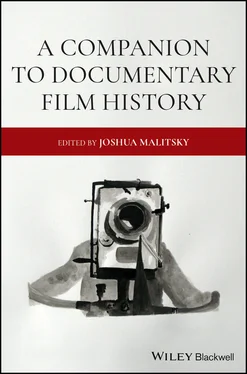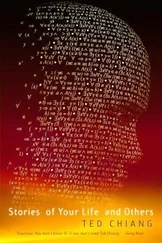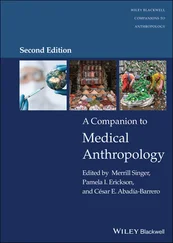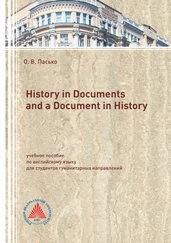In Michael Cowan’s book on Walter Ruttmann, for example, he expands beyond Ruttmann’s more commonly considered experimental films to include his sponsored work on advertising films, industrial films, medical films, and Nazi propaganda. For Cowan, Ruttmann was not exemplary in this range of work, as “ all of them [the Weimar avant‐garde] made sponsored films before and after 1933”—a practice which expanded beyond Germany, “encompassing filmmakers such as Joris Ivens, Len Lye, Dziga Vertov, Sergei Eisenstein, Rene Clair, and many others” (Cowan, 2014: 12). This fusion never goes away, and a combination of independent feature‐length filmmaking and commissioned shorts can be seen, for example, with Errol Morris’s work. But beyond the scope of such studies, Cowan, Malte Hagener, and others have demonstrated that thinking together experimental aesthetics and practical application in sponsored work enables a fuller understanding of these filmmakers’ aesthetics. Rather than imagining the commissioned work as a practical and time‐consuming diversion, we become open to the possibility that each practice encourages and enables innovation in form and approach in the others (Cowan, 2014; Acland and Wasson, 2011; Hediger and Vonderau, 2009; Hagener, 2007; Orgeron, Orgeron, and Streible, 2012; Dahlquist and Vonderau, 2020). The new and expanded history of documentary film is also a new way of understanding what documentary is and how it has functioned over time.
This volume binds histories of what we might take as “classical” or “social” documentaries together with work that addresses “useful” nonfiction film practices under the heading of “documentary” (Acland and Wasson, 2011). I do so to encourage the creation of an expanded, enriched sense of documentary and nonfiction film studies and, most importantly, to account for the argument made above about the value of such a framework for understanding materialist and aesthetic histories. But there is no consensus about terminology in the field of Cinema and Media Studies, i.e. what counts as documentary and what should be described as a nonfiction genre is not at all decided.
This generates a tension with perhaps the most cited study of documentary media. In his introduction to documentary cinema, Bill Nichols offered this pointed, precise explication:
Documentary film speaks about situations and events involving real people (social actors) who present themselves to us as themselves in stories that convey a plausible proposal about, or perspective on, the lives, situations, and events portrayed. The distinct point of view of the filmmaker shapes this point of view into a way of seeing the historical world directly rather than into a fictional allegory.
(Nichols, 2010: 14)
Nichols’ definition centers on the tripartite structure of documentary meaning‐making (filmmaker—subjects in the film—viewers), the film’s connection with the historical world, the form’s distinction from narrative fiction film, and the voiced, perspective of the filmmaker. It has become the default definition of much work on the topic.
Yet there is increasingly little agreement about what defines documentary or documentary film in the first place. The contributors to this volume use a range of terms to describe the films associated with their objects of study, most frequently taking their cues from the labels being used at the time— kulturfilm , film journal, propaganda film, to name a few. There is even some playfulness and defiance about the effort to define it at all. Kahana remarks that “documentary is a slippery eel” (Kahana, 2016: 1). Juhasz and Lebow open their volume somewhat surprisingly with the remark, “even if we can agree that the majority of documentaries … may be identified by certain well‐worn practices … we accept what has become commonplace in documentary studies: that documentary defies definition” (Juhasz and Lebow, 2015: 1). To be sure, definitions of documentary—and there are many who make the effort to define—depend on whether they are driven by aesthetic, epistemological, ontological, or political concerns. Many reckon with the most famous one: John Grierson’s “creative treatment of actuality,” the fundamental principles of which drive Brian Winston’s deconstruction and disavowal in Claiming the Real (Winston, 1995). The father of documentary would surely not be pleased by any inclusion of these “lower” forms of nonfiction film practices, which so often mistake “the phenomenon for the thing itself … ignoring everything that gave it the trouble of conscience, and penetration and thought” (Grierson, 1966: 201). Eschewing those labels, Michael Renov turns to poetics and rhetoric, an approach to artistic technique whose position at the border of science and art, and truth and beauty, he sees as homologous to the stance of documentary. He identifies four “fundamental tendencies or rhetorical/aesthetic functions” of documentary that emerge from particular historical, cultural, and technological contexts: to record, reveal or preserve; to persuade or promote; to analyze or interrogate; and to express (Renov, 1993: 21). From the literary to the historical, Philip Rosen emphasizes the temporal gap required for the process of “converting document into documentary” (Rosen, 2001: 263). For Rosen, it is the process of transforming “relatively unbridled visual indexicality into sense” via sequenciation, that marks documentary’s imbrication with historical meaning (Rosen, 2001: 232).
Others have sought to define documentary as an approach to speaking about the world with the world that expands beyond cinema and even photographic or pictorial‐based media. Robert Coles’s Doing Documentary Work —the first book on documentary I was assigned in graduate school—addresses documentary projects across literature, photography, and film, assessing artists’ aesthetic, ethical, psychological, and critical struggles to communicate about the world. For Coles, documentary, across these media forms, is about engaging with others, and any attempt to speak about others is inflected by the subjective position one occupies (Coles, 1998). The film historian Charles Musser likewise aims to think documentary beyond cinema, linking his interest in definition to questions of history and origins. He argues in favor of “the need to think about documentary as a formation and as a practice that is not arbitrarily tied to the appearance and rapid adoption of that term” (Musser, 2018: 2). Musser points to two strands of cultural production that help us understand documentary’s longue durée : the magic lantern and the lecture. The former links nonfiction to technology and the image while the latter points to a founding instance of documentary truth, one based in science and experienced collectively. Rather than documentary depending on technological reproducibility, he writes:
The documentary tradition should not be seen as a subset of the history of cinema—but something else. They are two perhaps incommensurate histories that intersect, overlap, and become intertwined. Documentary practices offered a method of communication that incorporated new media forms as they became available. Projected celluloid‐based motion pictures was but one of these.
(Musser, 2018: 11)
For Musser, this long view of documentary provides insight into the form’s past and offers flexibility for thinking about contemporary practices.
Definitions are multiple, varied, even contradictory. Yet, in this way, with their negotiation between precision and flexibility and their various foci, they can be helpful; they call attention to the epistemological, ethical, and aesthetic concerns of the moment of their articulation. Along those lines, the goal of this Introduction is not to attempt to define documentary but instead to introduce some of the ideas leading thinkers on the subject have put forth. Readers of the volume can then see how related conceptions are articulated by the contributors themselves, as well as how various tenets of documentary are prioritized by the work under consideration in their pieces.
Читать дальше












